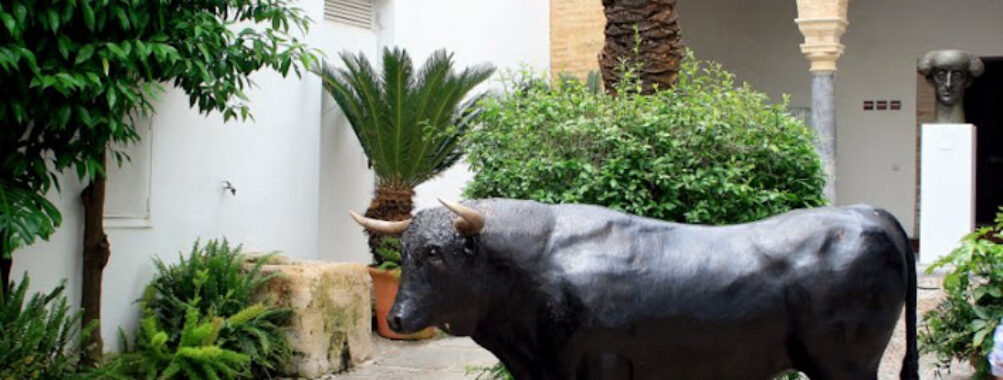
Bullfighting Museum of Cordoba
Table of Contents
Description
The Bullfighting Museum of Cordoba is one of those places that quietly pulls you into a story you didn’t even know you wanted to hear. Housed in the 16th-century Casa de las Bulas, right in the heart of the old Jewish quarter, it’s a building that already feels like it has a thousand tales to tell before you even step inside. The museum is dedicated to the history and traditions of bullfighting in Cordoba, a city that has produced some of the most legendary matadors—names like Lagartijo, Guerrita, Machaquito, Manolete, and Manuel Benítez “El Cordobés” still carry weight here. And whether you’re a fan of the sport or not, it’s impossible to ignore how deeply it’s woven into the cultural fabric of the city.
Inside, the atmosphere shifts from reverent to almost theatrical. You’ll find elaborate bullfighting costumes shimmering under soft lights, historic posters that look like they’ve been plucked straight from a century-old street wall, and photographs that capture the raw intensity of the arena. There’s also a fascinating collection of paintings, taxidermy, and personal belongings of the matadors, each piece telling you something about the people behind the spectacle. Some visitors leave feeling inspired by the artistry and tradition; others walk away conflicted, wrestling with the ethics of bullfighting. That’s part of what makes this museum so intriguing—it doesn’t shy away from showing the beauty and the controversy side by side.
Personally, I’ve always been more interested in the cultural side of bullfighting than the sport itself. The craftsmanship of the costumes alone is worth the visit—every stitch and bead feels like a work of art. And the building itself? It’s a gem. The Mudejar architecture, with its arches and courtyards, makes you want to slow down and just absorb the space. Even if you’re not here for the bullfighting, you might find yourself staying longer than you expected, simply because the museum draws you in with its layers of history.
Key Features
- Located in a restored 16th-century Mudejar-style mansion, Casa de las Bulas
- Extensive collection of bullfighting costumes, posters, paintings, and memorabilia
- Dedicated sections honoring Cordoba’s five legendary matadors
- Archival photographs and documents from the 19th and 20th centuries
- Taxidermy displays and artistic interpretations of bullfighting scenes
- Wheelchair-accessible entrance and restrooms
- Set within Cordoba’s historic Jewish quarter, adding a rich cultural backdrop
Best Time to Visit
If you can, aim for late spring or early autumn. The weather in Cordoba can be unforgiving in the peak of summer—think 40°C days that make you question all your life choices—so those shoulder seasons are much more comfortable for walking around the city. Mornings tend to be quieter, giving you more space to explore the museum without feeling rushed. And if you’re visiting during one of Cordoba’s local festivals, like the Feria de Nuestra Señora de la Salud, you might find the experience even more immersive, though it will definitely be busier. Personally, I prefer visiting on a weekday morning, when the courtyards feel calm and the exhibits aren’t crowded.
How to Get There
The museum sits in the old quarter, which means you’ll probably be navigating narrow, winding streets that are more suited to walking than driving. If you’re coming from the Mezquita-Catedral area, it’s just a short walk—less than 10 minutes if you don’t get sidetracked by the charming little shops along the way. Public buses stop nearby, but honestly, half the fun is wandering through the neighborhood on foot. If you do choose to drive, be prepared for limited parking and some tight turns—Cordoba’s historic center wasn’t exactly designed with modern cars in mind.
Tips for Visiting
First off, give yourself more time than you think you’ll need. This isn’t a huge museum, but the details are what make it special, and rushing through would be a shame. Wear comfortable shoes—you’ll likely be walking on cobblestones before and after your visit. If you’re sensitive to heat, plan your visit for earlier in the day, especially in summer. And don’t be afraid to ask the staff questions; many of them are passionate about the history and can point you toward exhibits you might otherwise overlook.
Photography is usually allowed, but be respectful—some of the items are delicate and irreplaceable. If you’re traveling with kids, be prepared to explain the context of bullfighting; it’s a tradition that can spark a lot of questions. And one last thing: take a moment in the courtyard before you leave. It’s a peaceful spot that offers a nice contrast to the drama of the exhibits inside, and it’s the perfect place to pause and reflect on what you’ve just seen.
Location
Places to Stay Near Bullfighting Museum of Cordoba
Find and Book a Tour
Explore More Travel Guides
No reviews found! Be the first to review!